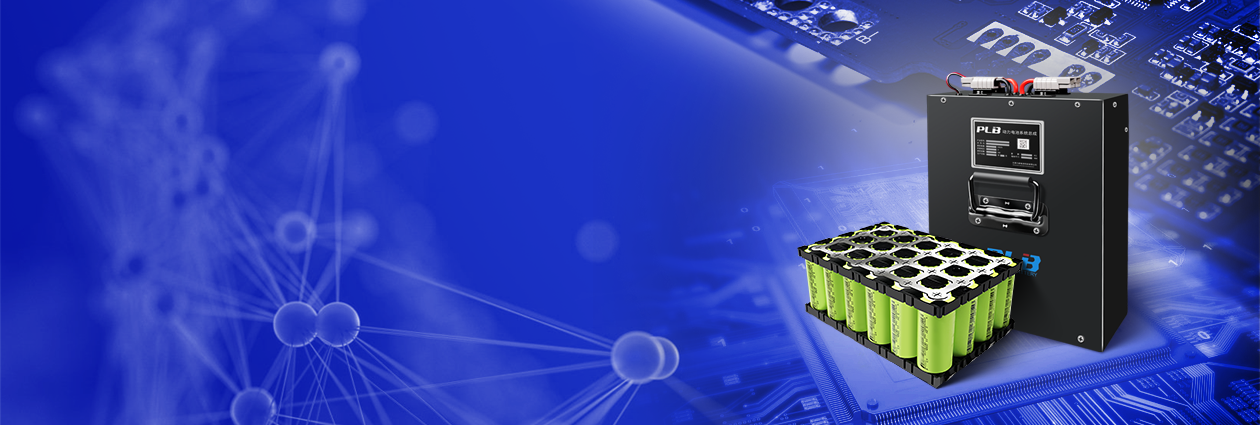-
PLB Breaks New Ground in Low-Temperature Technology: Unfazed at -40℃
In the surging wave of the global new-energy industry, continuous innovation in lithium-ion technology is the engine that keeps the sector moving forward. As a leading manufacturer of 26650 lithium cells, Power Long Battery (PLB) has never stopped pushing the envelope. Its latest milestone: an advanced low-temperature LiFePO₄ cell capable of stable discharge at -40℃ and safe charging at -20℃, with a peak discharge rate of up to 80C. The achievement cements PLB’s position at the forefront of extreme-cold battery performance and opens exciting avenues for real-world deployment. Relentless R&D to Shatter the Low-Temperature Barrier Lithium-ion batteries traditionally suffer sharp performance losses below 0℃, where capacity, discharge capability and safety all drop dramatically. That limitation has restricted their use in frigid regions and harsh operating conditions. PLB set out to change that. By re-engineering key materials, cell architecture and electrolyte chemistry—and then validating each iteration through exhaustive testing—the team has…
-
PLB Showcases 26650 Low-Temperature Cells and Lithium Battery System Solutions at CIBF2025
From May 15 to 17, 2025, the 17th China International Battery Fair (CIBF2025) grandly opened at the Shenzhen World Exhibition & Convention Center. As the world’s largest and most influential battery industry event, CIBF2025 brought together over 3,000 renowned enterprises and attracted more than 400,000 professional attendees, presenting cutting-edge innovations and future trends in the global new energy industry. As a leading manufacturer of 26650 lithium cells and provider of customized PACK solutions, Dongguan Power Long Battery Technology Co., Ltd. (hereinafter referred to as “PLB”) made a powerful appearance with its lineup of 26650 low-temperature/high-rate cells and comprehensive lithium battery system solutions. The exhibition fully demonstrated the company’s technological innovation and strong application capabilities. Focused on Niche Markets, Delivering High-Performance Lithium Battery Solutions At CIBF2025, PLB showcased a variety of 26650 lithium cells and their applications in multiple sectors, including UPS systems, AGVs, motorcycle starter batteries, truck parking & a/c…
-
IFR26650-25D Low-Temperature Battery (-40℃)
Cell model: IFR 26650-25D
Type: 3.2 v lifepo4 battery丨ultra-low temperature batteries丨-40℃ discharge丨up to 80C discharge current
Applications:
– Motorcycle starting power, UPS (outdoor), special equipment, weapon systems, and other high-rate discharge applications, as well as scenarios requiring low-temperature charging.
Feature advantages:
– Ultra-Low Temperature: -40℃ discharge, -20℃ charge;
– High Rate: 80C discharge;
– High security, high consistency, fast charging, long lifespan;
– Wide temperature range: -40℃ to 60℃
– Cell size: diameter 26.3 ± 0.2mm, height 65.2 ± 0.3mm
– Certification: UL1642, UL2054,UL1973, IEC62133, UN38.3, RoHS, REACH, etc. -
What Is A Battery C Rating & How to Calculate C Rate
The C-rate is a crucial parameter for measuring the charge and discharge rate of lithium batteries, directly affecting their performance and application scenarios. It represents the relationship between the discharge/charge current and the rated capacity of the battery. The formula for calculating the C-rate is: C-Rate = Charge/Discharge Current (A) / Rated Capacity (Ah). A clear understanding of the C-rate helps in selecting the right lithium battery to ensure stable operation and optimal efficiency of the device. What is C-Rate? The C-rate defines the charging and discharging speed of a battery and is expressed as the ratio of current to the rated capacity (Ah). A 1C charging rate means the battery can be fully charged in one hour. The smaller the C value, the longer the charging time. A 1C discharge rate means the battery can be fully discharged in one hour. Similarly, a lower C value results in a…
-
High-Rate LiFePO4 Batteries: Performance and Safety
In high-power applications, discharge rate, cycle life, and safety are critical factors. As demand for high-power energy solutions grows in power tools, energy storage systems, electric transportation, and industrial equipment, batteries with high charge/discharge capabilities have become a focal point in the market. LiFePO4 (Lithium Iron Phosphate) batteries have gained traction in high-rate applications due to their superior thermal stability, long lifespan, and high safety. Compared to conventional NMC (Nickel Manganese Cobalt) lithium batteries, LiFePO4 batteries demonstrate greater stability under high temperatures, lower thermal runaway risk, and a longer cycle life while maintaining stable energy output under high-rate discharge conditions. This article will explore the advantages and safety mechanisms of high-rate LiFePO4 batteries to help users better understand their performance. What Is a High-Rate LiFePO4 Battery? A high-rate LiFePO4 battery is designed to deliver high discharge currents within a short period, making it ideal for power-demanding applications such as power…
-
What Is a Deep Cycle Battery?
Batteries are essential energy storage devices in both daily life and industrial applications. Different battery types are designed for specific uses, and deep cycle batteries are specifically developed to provide long-term power and withstand deep discharges. In this article, we’ll take a closer look at deep cycle batteries and their key characteristics. Deep Cycle Battery:A deep cycle battery is designed to handle deep discharges (typically 80%-100% of its capacity) and endure repeated charge-discharge cycles. These batteries focus on cycle life and stability, ensuring consistent performance over extended use. Deep cycle batteries come in various chemistries, including lead-acid, lithium-ion, and nickel-metal hydride (NiMH). Among them, lithium iron phosphate (LiFePO₄) deep cycle batteries have gained popularity due to their high energy density, long lifespan, and low self-discharge rate. Key Specifications of Deep Cycle Batteries When selecting a deep cycle battery, consider the following specifications: Capacity (Ah): Measured in amp-hours (Ah), capacity indicates…
-
How to Differentiate Between A, B, and C-Grade Battery Cells?
Battery cells are the core components of energy storage systems, directly impacting the reliability, safety, and lifespan of end products. However, many users lack a clear understanding of battery cell grading. This article will break down how to distinguish A-Grade, B-Grade, and C-Grade battery cells, helping you build a solid knowledge foundation when selecting high-quality cells. Why Are Battery Cells Graded? When manufacturers produce battery cells in batches, they categorize them based on capacity, internal resistance, appearance, and overall performance. These cells are typically classified as A-Grade, B-Grade, or C-Grade. However, there is no universal grading standard—each manufacturer has its own criteria, so classifications may vary. Understanding these differences is crucial for choosing high-quality battery cells. A-Grade Cells: Top Quality & Best Performance A-Grade cells meet or exceed national and industry standards in all key parameters. They have the following characteristics: Perfect Appearance – No damage, scratches, swelling, or leakage….
-
How to Choose a LiFePO4 Battery?
LiFePO4 (Lithium Iron Phosphate) batteries are popular due to their durability, excellent performance, and high safety standards. However, with so many options available on the market, selecting a high-quality battery can be challenging. This guide will help you understand the key factors to consider when choosing a LiFePO4 battery and recommend the best purchasing channels for reliable products. What is a LiFePO4 Battery? A LiFePO4 battery is a type of lithium-ion battery that uses lithium iron phosphate as the cathode material. Thanks to its unique chemical composition, it offers superior thermal stability and safety, significantly reducing the risk of thermal runaway. Compared to traditional lithium-ion batteries (such as NMC batteries), LiFePO4 batteries are known for their higher safety standards and longer cycle life, often exceeding 2,000 charge cycles. Due to their longevity, high safety, and stable performance across a wide temperature range, they are widely used in applications such as…
-
Everything You Need to Know About LiFePO4 Batteries!
As society gradually shifts towards sustainable energy, the application of lithium batteries is expanding, with the safe, efficient, and environmentally friendly Lithium Iron Phosphate (LiFePO4) battery quickly becoming the preferred choice in the green energy sector. So, what exactly is a LiFePO4 battery? What are its advantages and applications? Let’s delve into this battery technology. What is a LiFePO4 Battery? LiFePO4 stands for Lithium Iron Phosphate Battery, often abbreviated as LFP battery. It is a rechargeable lithium battery that uses lithium iron phosphate (LiFePO4) as the positive electrode material and graphite as the negative electrode. The history of lithium batteries dates back over 40 years, initially used in small devices like watches and calculators. However, traditional lithium-ion batteries, such as lithium cobalt oxide batteries, have issues like poor conductivity, overheating, and even fire hazards, which limit their application in larger devices. In 1997, researchers like Goodenough began developing LiFePO4 materials….
-
Advantages of LiFePO4 Batteries for Emergency Jump Starters
In today’s automotive industry, emergency jump starter batteries have become an essential tool for many car owners. Especially during cold winters or under extreme conditions, car batteries may falter, and a reliable emergency jump starter can resolve starting issues effectively, providing peace of mind and convenience. Among various battery technologies, LiFePO4 (Lithium Iron Phosphate) batteries stand out as the preferred solution for emergency jump starters, thanks to their unique advantages. What is a LiFePO4 Battery? LiFePO4 batteries are a type of lithium-ion battery that uses lithium iron phosphate as the cathode material and graphite as the anode. Known for their excellent thermal stability, high energy density, and eco-friendly characteristics, these batteries are widely used in power systems, energy storage, power tools, and emergency jump starters. Compared to traditional lead-acid and other lithium batteries, LiFePO4 batteries offer superior safety and longer service life. Why Choose LiFePO4 for Emergency Jump Starters? 1….


